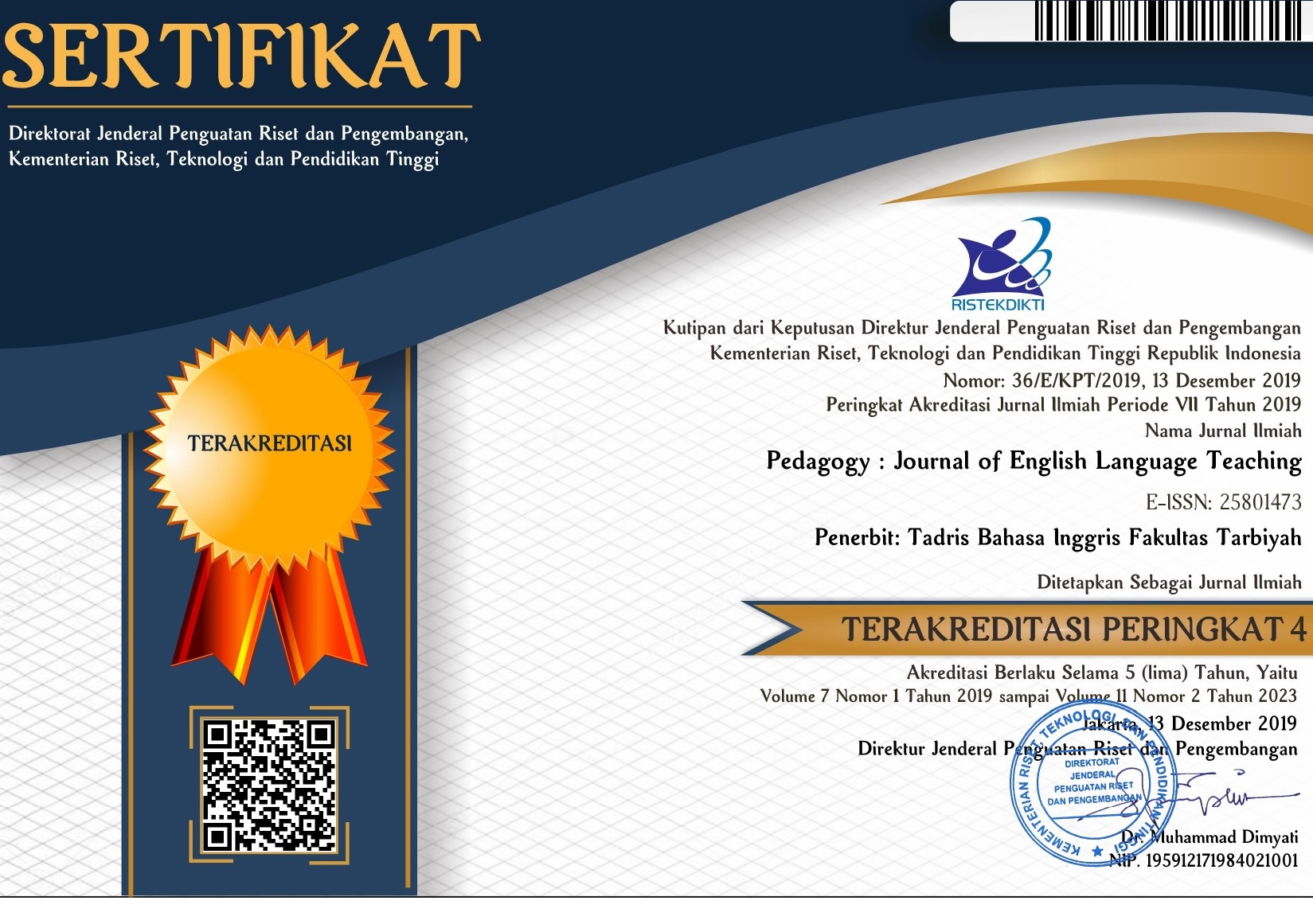SOMATIC, AUDITORY, VISUAL, INTELLECTUAL (SAVI): ITS EFFECTIVENESS TO TEACH WRITING FROM THE PERSPECTIVE OF STUDENTS’ CRITICAL THINKING
DOI:
https://doi.org/10.32332/pedagogy.v4i2.382Keywords:
Writing, Somatic, Auditory, Visual,, Intellectual (SAVI), Two Stay Two Stray, critical thinking, experimental studyAbstract
SAVI is a method used in teaching and learning process which has four main aspects, they are Somatic, it is learning by moving and doing; Auditory, it is learning by talking and hearing; Visual, it is learning by observing and seeing; Intellectual, it is learning by problem solving and reflecting. This article refers to an experimental study on the effectiveness of SAVI to teach writing at one of senior high school in Metro, Lampung. The samples were two classes namely experimental class which was taugh using SAVI and control class which was taught by TSTS. Each class consisted of two groups based on the level of critical thinking (high and low). To gain the data, two instruments were used namely writing test and critical thinking test. The data were, then, analysed by using Multifactor Analysis of Variance ANOVA 2X2 and Tukey test. Before conducting the ANOVA test, pre-requisite test namley normality and homogeneity test were conducted. The findings of this research are: (1) SAVI is more effective than TSTS (2) The students with high critical thinking have better writing skill than those having low critical thinking; and (3) There is an interaction between teaching methods and students’ critical thinking in teaching writing. Therefore, it is recommended for English teachers to implement SAVI in teaching writing activities because this method gives positive contribution in improving the students writing skill and facilitating the students’ critical thinking to produce a good text.
Downloads
Published
Issue
Section
License
Copyright (c) 2025 Linda Septiyana

This work is licensed under a Creative Commons Attribution-ShareAlike 4.0 International License.















